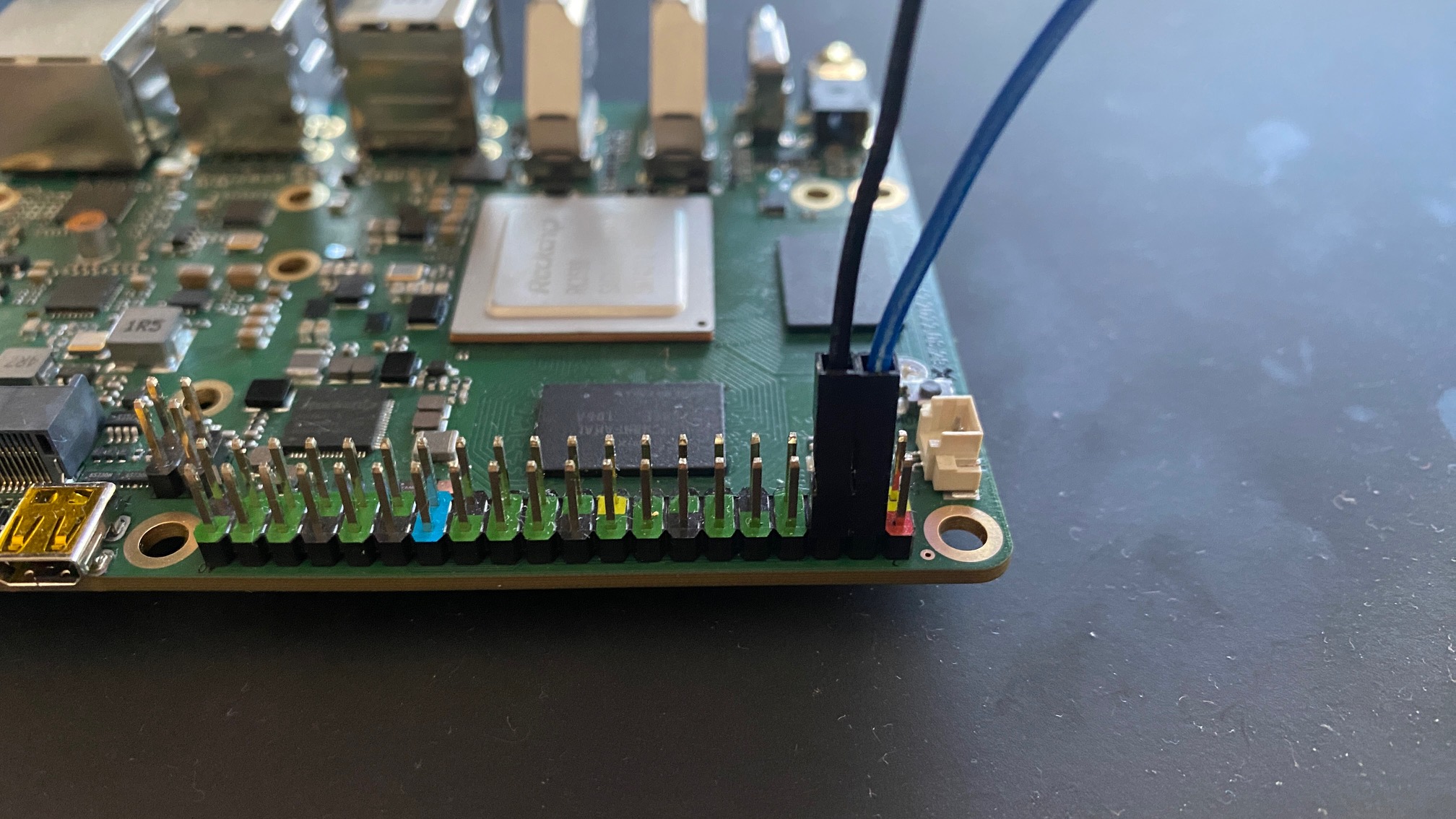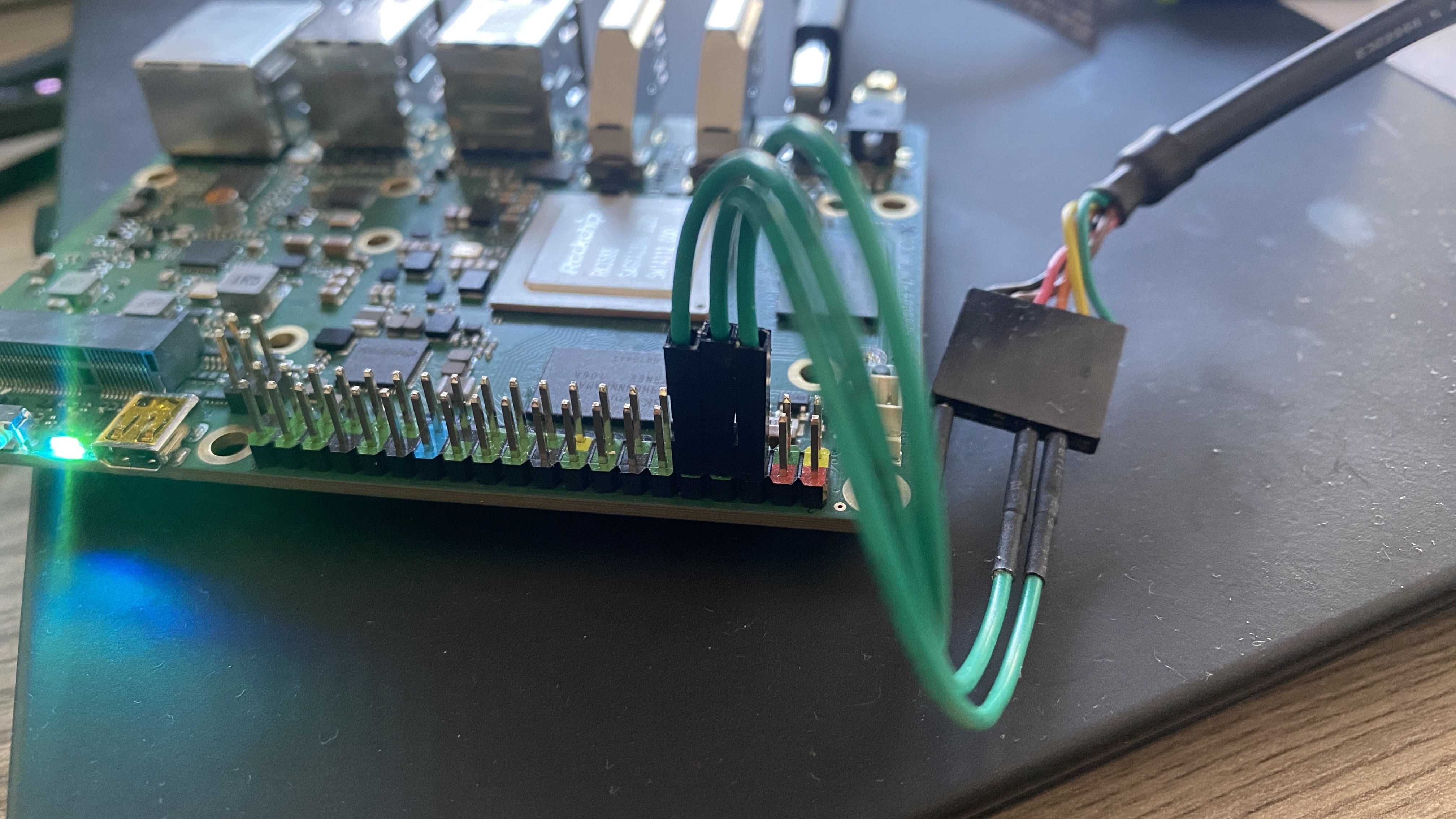Note: A lot of the information here was taken from Collabora’s Rock5b notes repository.
ROCK 5B is a Rockchip RK3588 based SBC (Single Board Computer) by Radxa.
There are tree variants depending on the DRAM size : 4G, 8G and 16G.
Specification:
- Rockchip Rk3588 SoC
- 4x ARM Cortex-A76, 4x ARM Cortex-A55
- 4/8/16GB memory LPDDR4x
- Mali G610MC4 GPU
- MIPI CSI 2 multiple lanes connector
- eMMC module connector
- uSD slot (up to 128GB)
- 2x USB 2.0, 2x USB 3.0
- 2x HDMI output, 1x HDMI input
- Ethernet port
- 40-pin IO header including UART, SPI, I2C and 5V DC power in
- USB PD over USB Type-C
- Size: 85mm x 54mm
This board is available from Radxa distributors.
Power control
The board can be powered on with 5V via pins 2 or 4 in the GPIO header (as shown in the GPIO pinout), and GND on pin 6 for example. The pins are colored accordingly on the latest board revision:

Alternatively, the board can be powered via a USB PD Type-C connector:
- 9V/2A, 12V/2A, 15V/2A, 20V/2A
Radxa have tested various power supplies, making a comprehensive list of supplies which work and those which do not work here,
Low-level boot control
Serial connection on the board can be done through pins on the GPIO. The board’s TX is on pin 8 and RX on pin 10 as per the pinout. GND can be connected on pin 6 for example. Serial specification:
- 3.3V TTL
- 1500000 8n1

Network connectivity
A USB to Ethernet dongle is required for network connectivity. This has to be plugged into an USB type A port, and the network cable connected to the dongle.
Bootloader
For the bootloader setup, a ready-to-use image is available at Collabora’s Rock5B U-boot repository as an artifact from the CI. After flashing and dropping to the u-boot prompt, tftp and nfs can be configured to retrieve the kernel and rootfs.
The main bootloader is stored in SPI flash. Instructions on how to flash the memory are available here.
Lab notes and trouble shooting
None.